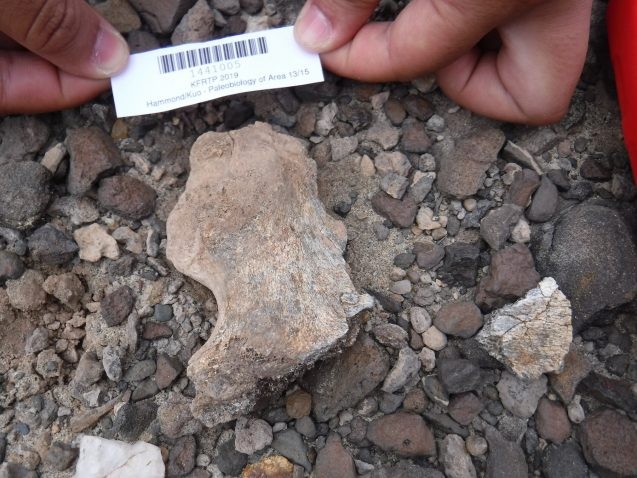Age Newly Verified, One of Oldest Prehuman Fossils Leads to New Finds
Controversy over the age of an early fossil of Homo erectus has been settled, and has led to other specimens.
A new study verifies the age and origin of one of the oldest specimens of Homo erectus, a very successful early human who roamed the world for nearly 2 million years. In doing so, the researchers also found two new specimens—likely the earliest pieces of a Homo erectus skeleton yet discovered. Details are published today in the journal Nature Communications.
Homo erectus is the first known early human that had a body very similar to that of modern humans. It had longer lower limbs than upper limbs, a torso shaped more like ours, and a larger cranial capacity than earlier hominids.
In 1974, scientists in the East Turkana region of Kenya found one of the oldest pieces of evidence for H. erectus: a small skull fragment that dates to 1.9 million years. The specimen is surpassed in age only by a 2-million-year-old skull specimen in South Africa. But there was pushback, with some researchers arguing that the East Turkana specimen could have come from a younger fossil deposit and was possibly moved by water or wind to the spot where it was found.

To verify exactly where the fossil was found, the researchers in the new study, led by Ashley Hammond of the American Museum of Natural History, relied on archival materials and geological surveys. They went through hundreds of pages from old reports and published research. They also used satellite data and aerial imagery.
After reassessing the initial evidence and searching for new clues, they found that the specimen was actually from a somewhat different area than initially reported. This newly established location had no evidence of a younger fossil outcrop that may have washed there. This supported the original age given to the fossil.
Within 50 meters of this reconstructed location, the researchers also found two new early-human fossils: a partial pelvis and a foot bone. Although the researchers say the fragments could be from the same individual, there is no way to prove that, after the fossils have been separated for so long. But they might be the earliest postcranial—“below the head”—specimens yet discovered for H. erectus.
The scientists also collected fossilized teeth from other vertebrates, mostly mammals, from the area. From the enamel, they collected and analyzed isotope data to paint a better picture of the environment in which the H. erectus individual lived.
“Our new carbon isotope data from fossil enamel tell us that the mammals found in association with the Homo fossils in the area were all grazing on grasses,” said Kevin Uno, a paleoecologist at Columbia University’s Lamont-Doherty Earth Observatory. “The enamel oxygen isotope data suggest it was a relatively arid habitat based on comparisons to other enamel data from this area.” The evidence suggests that this early H. erectus lived with animals that preferred open areas to forests. It was probably near a stable body of water, as documented by freshwater sponges preserved in the rocks.
Key to the field work driving this study were the students and staff from the Koobi Fora Field School, which provides undergraduate and graduate students with on-the-ground experience in paleoanthropology. The school is run through a collaboration between The George Washington University and the National Museums of Kenya.
Support for the study was provided in part by the U.S. National Science Foundation, Brazil’s Fundação de Amparo à Pesquisa do Estado de São Paulo, and the American Museum of Natural History.
